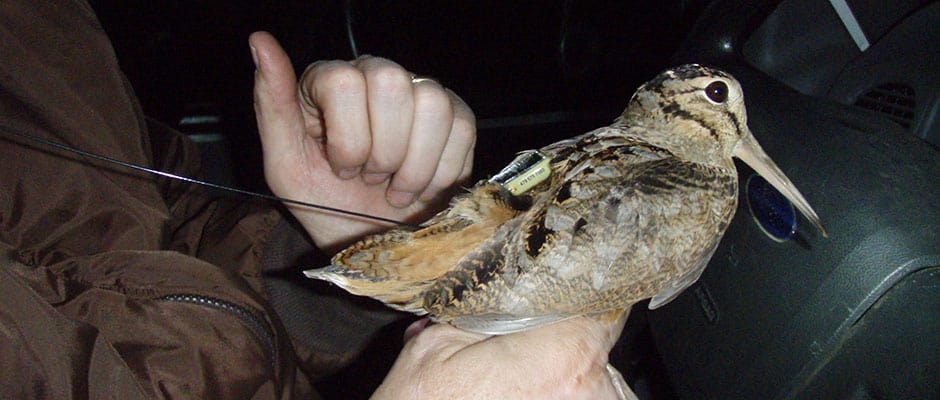Share this article
Agency Aids Ongoing Woodcock Research in Arkansas
The U.S. Fish and Wildlife Service recently awarded nearly $50,000 to biologists in Arkansas for an ongoing American woodcock (Scolopax minor) monitoring program.
Since 2013, FWS has been working with the U.S. Geological Survey’s Cooperative Fish and Wildlife Research Units in Arkansas and Minnesota to study the migration of the woodcock. In Arkansas, the unit is a partnership between the U.S. Geological Survey, Wildlife Management Institute, Arkansas Game and Fish Commission and University of Arkansas. Joe Moore, a graduate student at the University of Arkansas, where the research unit is housed, will oversee the project.
“I think it’s important that state wildlife biologists — migratory bird biologists — begin to appreciate the timing and the routes of birds moving through their states,” said TWS member David Krementz, leader of Arkansas Cooperative Fish and Wildlife Research Unit and professor of biological sciences at the University of Arkansas. “One of the big take home messages from this project is to do a better job of on the ground habitat management for woodcock during migration.”
Once fairly common throughout the eastern and central portions of North America, woodcock are now a species of special conservation concern. According to FWS’ American Woodcock Population Status, 2015, data from the Singing-ground Survey reveal steady long-term (1968-2015) decline in populations across the species’ range, and significant declines in the past decade for populations east of the Appalachians.
Migration is believed to be a period of high mortality for woodcock, but there is very little data available for that portion of the birds’ lifecycle. Krementz says the first thing researchers need to learn is what routes these birds are taking when they migrate from the American southeast to the northern plains, Northeast and Canada. “We’ve got some estimates of survival rates at the breeding grounds; we’ve got some estimates of survival from the winter grounds; but nothing in between. It was clearly an area and a time when we needed to gather some more information to fill the gaps.”
New technologies in the form of miniaturized satellite telemetry units (PTTs) have greatly improved the researchers’ ability to track these small, well-camouflaged birds. Already, these new tracking methods have led to some fascinating discoveries, including a migration pattern for some birds that traveled northward on the west side of the Appalachians, but to the east of the mountains on their way south. The PTTs have also confirmed long-held suspicions that more birds than were previously thought breed in Canada.
“In terms of migratory birds we’re going to get a whole lot better understanding of how things work in the near future because of these changing technologies,” Krementz said.
Header Image:
Research wildlife biologist David Krementz attaches a miniature satellite telemetry device (PTT) to an American woodcock after it was captured at the Caddo Lake National Wildlife Refuge in Texas in January 2015. This relatively new technology has given scientists a more efficient and effective way to track woodcocks as they continue to study the birds’ migration habits
Image Credit: Joe Moore/Arkansas Cooperative Fish and Wildlife Research Unit








